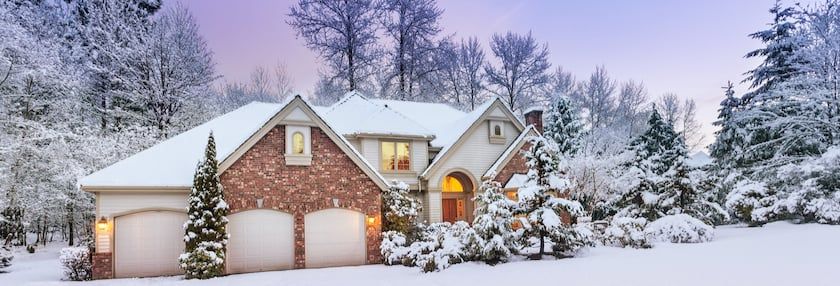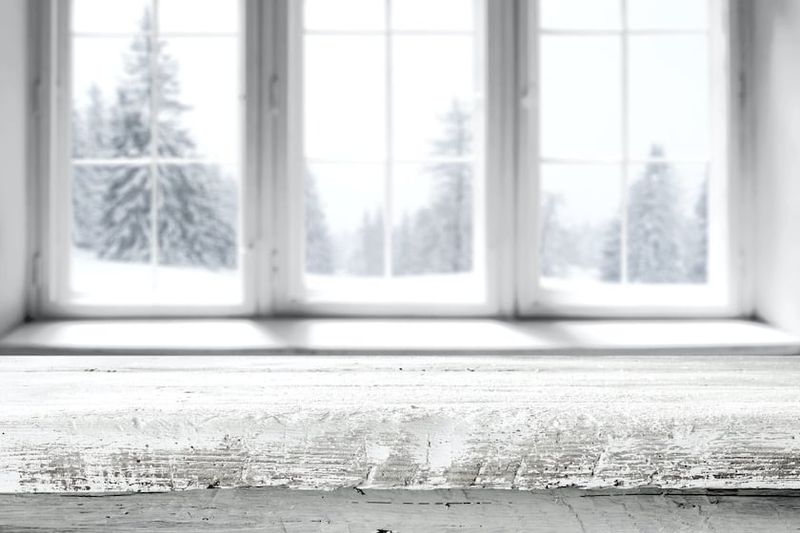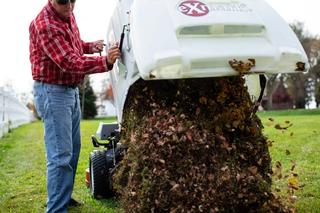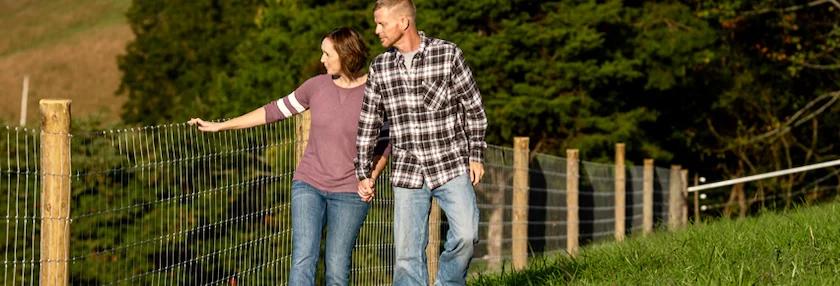Winterizing Your Farmhouse


Affordable ideas for keeping winter outside
Winter is coming, and it looks like we're going to spend most of it at home this year. It means many long, pleasant evenings with the family gathered around the fireplace, with a warm cup of cocoa and a vibrant atmosphere. Some may say that it's the most wonderful time of the year, with many joyous occasions such as Christmas or New Years' Eve being the highlights of this particular season.
It can, however, be one of the most exhausting and demanding periods in the calendar year, as a lot of work needs to be done in and around the house to make sure everybody stays warm and safe. This includes shoveling snow out of the driveway nearly every single morning, carrying tree limbs for the fireplace, as well as putting on multiple layers of clothing just to go to the convenience store.
Many households across the United States struggle with problems that arise when a house, shed or garage was not properly winterized. This entails making sure that none of the windows and doors have cracks in them that would let the cold, winter air in, as well as doing other work around the building to make sure that it is cold-proof all around. It's also about taking care of the exterior, plumbing, and many other things that could contribute to your home being colder than it should be.
If you're feeling that winter is creeping up on you and you're not quite sure about how to prepare for it, check out our guide to winterizing your home exterior without spending a fortune!
Fortify All Doors
Each and every door can be a source of potential leaks, which is why it's so important to get them fortified before the coldest temperatures arrive in your area. It will also help you improve their functioning and prevent them from breaking due to the cold. You don't want to be looking up "garage door repair near me" with your car in front of the house and the sliding mechanism having gotten stuck in the middle of the way up!
Aside from making sure that your garage or farmhouse door mechanism is well-oiled and operational, you might want to consider installing draft guards that will keep the space between your door and the floor sealed up so that no heat can escape your home. It's a cheap and effective way to improve insulation, especially when compared to the alternatives such as replacing your wooden door with a steel one.
Cleaning Up
You need to take care of the outside of your home if you want it to stay warm throughout the winter. This includes the basics such as mowing the lawn, sweeping up all of the leaves that had fallen into your garden during the fall, but also more advanced outdoor work that will keep the cold away.
First and foremost, you should focus on thegutters. Dirty and clogged up gutters can lead to ice buildups and water flowing through, which can result in icicles forming all around the building. Not only does it decrease the overall temperature on the inside, but it can also be a hazard -- falling icicles may cause some serious head injuries! If you're unsure of how to get around to it, you might want to hire a professional to take care of the gutters for you.
You also need to make sure your garden is prepared with a lawn in the proper order, and all of the hoses and gardening tools safely put away in your shed or basement. Many people overlook storing their hoses away in a safe place, which can lead to ice building up on the inside of the hose, which in turn may lead to damage to the pipes.
Check the Roof
You need to be sure that your roof is able to withstand heavy snowfall and the buildup of ice over the course of the winter. Unless you have experience working with roof tiles, you might want to call up a professional to handle this part of winterizing your home. The roof should be in mint condition -- check for leaks and cracks in the tiles, as well as try and ensure that their durability is enough to handle months of snowfall. It may seem light to you, but snow can buildup very quickly and can cause irreversible damage to your home if you let it.
Check the Crawl Space
Doors and windows aren't the only places through which cold air can get inside the farmhouse. Your home's foundation may turn out to be sucking up the heat. If there is a crawl space, you should thoroughly inspect it for any damage from rodents or water, as well as insulate it properly on your way out. This is another one of the aspects that people overlook when they winterize their houses. It's not something you think of right away, but heat can easily escape your home from underneath, and you should secure that part of the building for maximum insulation.
Inspect the Plumbing
Taking good care of the pipes in and around your home should be commonplace during any time of the year, not just before the winter. It is especially crucial then, though, as if there are any gaps or cracks in your pipes, it may lead to freezing-cold water coming out of your faucets, or, worse yet, long-lasting plumbing damage.

The Bottom Line
If you're going to winterize your home this fall, you should know that there is much more to it than the tips outlined in this article. It is meant to be a guide to help you get started and secure the outside of your building. There are many other aspects of keeping your home warm, such as double-checking the furnace or insulating every window from the inside. You don't want to overlook any of these matters, as they may lead to freezing temperatures inside of your home, which should be your primary shelter from the cold. If you haven't done any winterizing for years, ignoring it this fall may even lead to some permanent damage to the building.
Tags:Seasonal Living

Acreage Life is part of the Catalyst Communications Network publication family.















